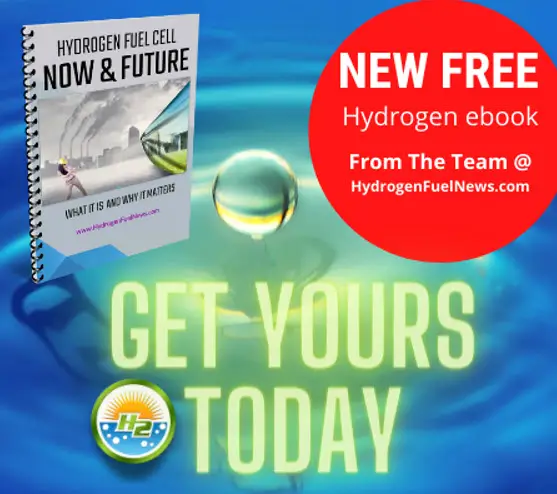
Airbus demonstrator hydrogen airplane to be ready in handful of years
February 28, 2022The Airline’s zero-emission tech demonstrator will be ready by mid-decade.
Airbus (EPA stock symbol AIR) will be prepared for a hydrogen airplane technology demonstrator by mid-decade. The airline is working with CFM International engine makers to ensure the tech is ready.
Airbus is now working with “key engine partners” for the development of its zero-emission plane.
The airline held a news conference last Tuesday in which it discussed the latest milestones it has reached in the development of its hydrogen airplane technology. Airbus has been one of the leaders among large international airlines investigating the use of H2 for carbon emission-free air travel.
CFM International is a main player among the “key engine partners” joining Airbus in the development of the H2 plane technology. That company is jointly owned by General Electric and Safran. It is the largest jet engine maker in the world (based on units sold). The project it is working on in collaboration with the airline will be adapting an existing engine to advance H2 propulsion research. The goal is to develop a zero-emission aircraft that is feasible for curbing CO2 emissions from air travel.

Airbus has already announced that it will be producing a small ZEROe hydrogen airplane.
The ZEROe passenger aircraft will be powered by H2 and will enter service in 2035. Last year in June, the airline told the European Union that the majority of carriers will be leaning on traditional jet engines until at least 2050.
That said, Airbus is working to be able to transition away from conventional jet fuel. It stated that disruptive technology will begin with smaller planes. It is currently focusing on planes that will hold between 50 and 100 people and that will fly carbon emission-free. It explained that this step will help to provide a technology foundation that can be built upon for the next generation of larger aircraft.
Another major player in the global aviation industry, Boeing, has also had a focus on transitioning toward decarbonization but hasn’t shown as much of an interest in hydrogen airplane technology. Instead, it has been investing in the development of sustainable aviation fuels (SAFs).
FULL AIRBUS CONFERENCE CALL AND EXPLANATION ON HOW IT WORKS…



 With over 15 years of reporting hydrogen news, we are your premier source for the latest updates and insights in hydrogen and renewable energy.
With over 15 years of reporting hydrogen news, we are your premier source for the latest updates and insights in hydrogen and renewable energy.
I have told this story so many times, but for some reason I don’t get a response. Quit thinking about storage everytime you think aboiut hydrogen! I can show someone how to turn a million bucks into a Billion Dollar Industry, quick and easy. We call it “Hydrogen On-site, On-demand”. We identified an entire chemical family in our research. (Research is done). We down-selected one set of reactants that fit our needs at the moment. We have discussed those needs at length. One of those reactants is available as a dry powder. The other is available as a liquid. Simply mixing them together will create a spontaneous exothermic reaction that releases pure hydrogen gas. Separated, they do not degrade.
In order to transport them to the site where they are to be used, they can be transported separately in different vehicles, together in separate containers on the same vehicle, or as we envisioned, pre-measured and encapsulated in a cartridge type container. The container may be small enough to carry, or large and installed with machinery. Additionally, the chemicals may be altered in form, such as the dry powder mixed with a liquid to make a transport slurry, or solidified and used as a block of material. The liquid chemical is probably going to
remain a liquid. Gasifying it does not make sense, nor does freezing it. Our research focused on the chemistry, not the application. The application will be the one that makes the most sense for the use. These may differ depending on the use. For example, automotive use may require them to remain in the form they are readily available in, where remote, backup, and residential use may be better served with solid forms.
When used, the chemicals mix together, release heat, and hydrogen. The hydrogen is then used in a fuel cell to produce electricity. What’s left over is the original chemicals without the hydrogen. In order to reconstitute the chemicals, you must add energy and hydrogen. It is a completely reversible chemical reaction, just like all chemical reactions. Every energy cycle in this universe is exactly the same. It is simply not possible to avoid this. Otherwise, you will violate several physical laws. Let’s use petroleum for example, because you understand that one. Energy from the sun was captured by microorganisms or plant life millions of years ago, and that energy was stored in the form of complex hydrocarbons. Pressure and temperature changed the organic mixture to petroleum, coal, peat, and natural gas. There is some speculation that simple geologic processes converted organic molecules directly from the earth’s materials into petroleum, bypassing the photosynthetic processes. Regardless, the original energy source was the sun.
The process for releasing the energy from the petroleum is by ignition. It is also an exothermic reaction. The energy in petroleum is primarily released from the breaking of carbon-carbon bonds. Want the rest of the story? Contact Global Power Reduction, Inc. Ken Hudson 352-999-3524